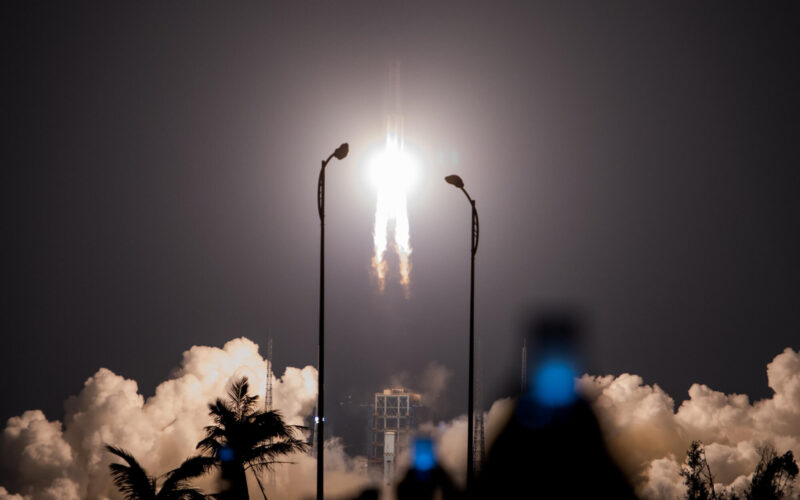The Long March 5B rocket carried the first of the three elements of the Chinese Space Station (SSC) into Earth orbit on April 29, 2021. After a few days of drifting 300 kilometers above our planet, the first stage of the launcher ended up being pulled by Earth’s gravity and is about to make an uncontrolled atmospheric re-entry.
While space agencies are usually required to dispose of their launchers in a controlled manner, exceptions are made, whether for technical or economical reasons. Thus, the Chinese-made launcher was left to spin at over 27,000 kilometers per hour around the Earth.
Calculations of its trajectory are nearly impossible at this point, as there are too many uncertainties with the effect of atmospheric drag. Experts predict that debris should fall back sometime between April 8 and 9, 2021. As for the exact location of the fall, one can only hope it will not be on anyone’s head.
The first launch of a Long March 5B rocket took place on May 5, 2020. The spacecraft reentered Earth’s atmosphere the very same way. Most of its debris was lost at sea off the coast of West Africa. However, several reports indicate that pieces fell in Côte d’Ivoire, damaging roofs but fortunately not injuring anyone.
In 2008, the US military destroyed one of its spy satellites as it was falling out of orbit, using a heat-seeking missile launched from a US Navy warship. At the time, the Pentagon was concerned that its fuel tank could survive atmospheric re-entry and spew toxic material.
This time, however, US Defense Secretary Lloyd Austin said there was no plan to shoot down the Chinese rocket. The Long March 5B rocket burnt most of its fuel and thus it does not constitute an environmental threat. Chinese state media the Global Times even described the reports on the uncontrolled atmospheric re-entry as “Western hype.”
Experts estimate that 25,000 space objects, nearly half of them considered as “large”, have re-entered the atmosphere since the launch of Sputnik in October 1957, and so far no casualties were ever reported. The risk, however, is never null.

